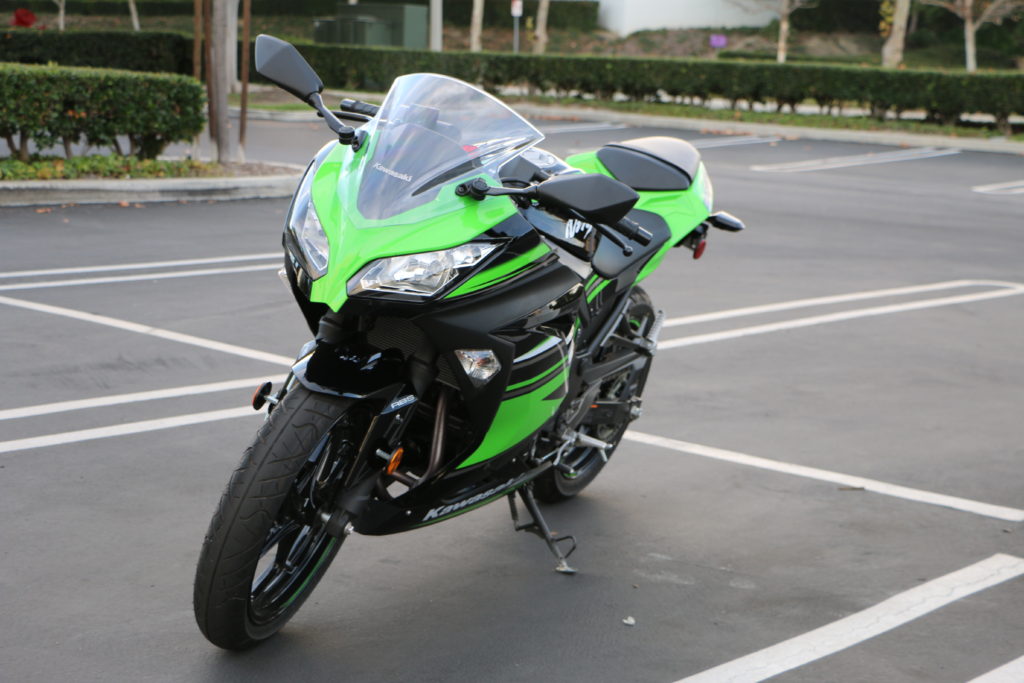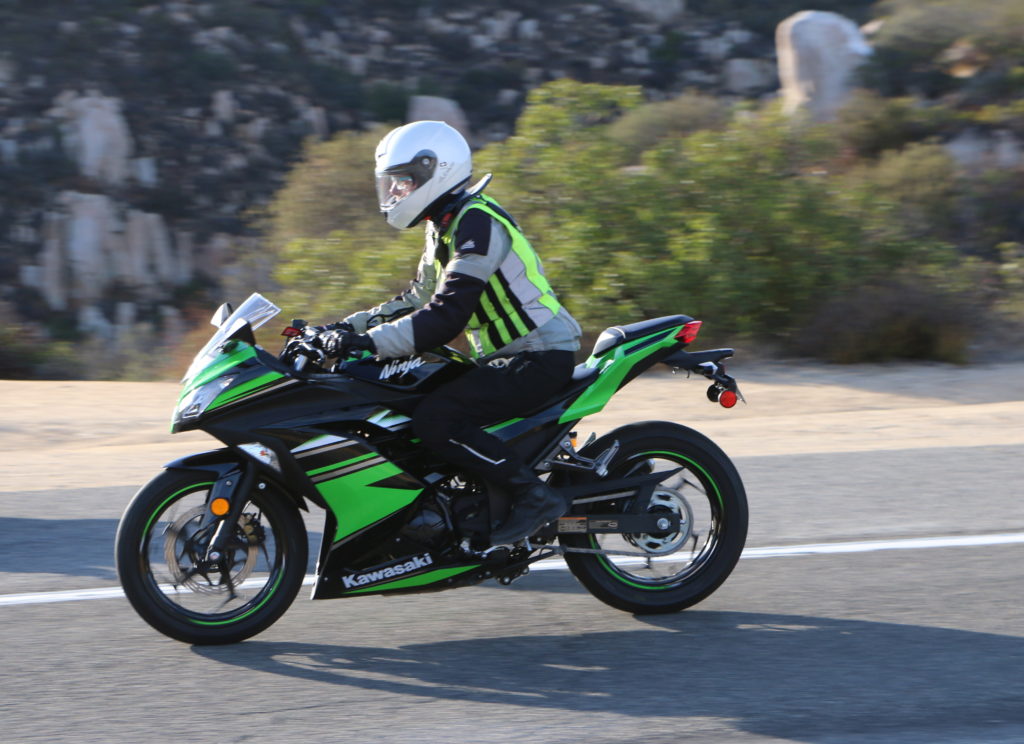The venerable Ninjette gets a re-do and earns its place in the books all over again. Photography by Ronald Ahrens.
I was headed to LA for some work training, so I started calling friends to see who wanted to hook up and hang out for a while. One thing led to another and the prospect of borrowing bikes got floated. Then, a chance meeting with the US rep from Schubert and a ride plan started to take shape. This is where it sometimes goes to hell, instead, it went closer to heaven: 2665ft closer, the notch at the top of the Ortega Highway in California.

The newest bearer of the Ninja name is a little parallel twin displacing 300ccs of volume. There is nothing about this bike that is big – from the exhaust ports that are barely an inch (25mm) in diameter, to the seat height at about 29″, to the standard riding position is almost sitting up for my 5’6″ frame. Even the graphics are small. The whole bike screams starter. And you know what? That is entirely ok. Because small means party time in Kawasaki-speak.
I admit up front that I consider myself a sort of lover of small bikes. I used to own a CBR250R that I considered illegal levels of fun, and currently turf my lawn with a beat-up old KL250G Super Sherpa. Smaller is lighter, more nimble, and easier to overpower. I am in charge of the bike, not the reverse. The little 300 is a logical step forward on the itty bitty bike path.

Kawasaki lent me the Ninja 300 through the Motorcycle Industry Council and I put 200 miles on it over the course of a day, exploring the Ortega Highway and Temecula wine country. Schubert North America lent me a C3Pro Women helmet to test out while exploring the desert on the Ninja.
The Ninja 300 is, despite its very sporty looks, a standard. The rider takes a slight lean forward, just enough to feel your core working to hold position. It’s a natural fit for my 5’6″ frame, my 32″ legs are more than enough to have both feet down and some air under my butt when standing over the bike. This means sure stops and standing while waiting for lights to turn green. The controls are sized for average to smaller hands, although my big mitts are not the best measure – I wear a men’s XL glove simply to get the length I need in the fingers. The seat is surprisingly comfortable for a stock plank, far better than the foam brick on my old CBR250R and wide/shapely enough to offer decent butt support and comfort for longer (2hr+) rides.

The transmission is a weak point – the six speed has the traditionally smooth shifting I associate with Kawi and their wonderful positive neutral finder, but first gear is completely useless and the entire range could do with a drop and new top cog to take the green machine up to modern highway speeds with a bit less buzz. Riding home, I became convinced that I’d broken something when I was unable to shift up at the behest of the upshift light – it’s apparently not locked out in sixth. I eventually had to downshift and figured out that everything was fine in the gearbox.
Schubert’s top-of-the-line ladies’ lid is an engineering marvel. Lighter than my RPHA-Max from HJC and closer-fitting, it is also quiet and cool. Several vents and a visor that will remain cracked open provide excellent air flow. The wide and tall eyeport has plenty of room for glasses. I’m stretching to find things that haven’t been said about this great helmet – even at the price, it’s as good as it gets – if it fits, of course. The inverted cheek pads modify the interior shape, bringing it closer to the female bone structure. This helps to keep the helmet in place on the rider’s head. Proper fit is best assessed by a professional, and after fitting by the Schuberth rep, I found that I wear a different size in Schubert than HJC. No surprise as head shape does more the determine helmet fit and comfort than head circumference, which is best used to size the shell.
The instrument cluster is offset and features a huge tach with a digital speedometer and assorted warning lights. The lights are clear and bright in daylight and easy to see. The information on the panel flows and is clear and legible. A multi-bar fuel gauge does require the bike to be mostly level to read properly – tilted back down a hill leads to false full readings. The bike returned roughly 60mpg in spirited riding.

The wheels are cast and painted to match the bodywork, in this case, black. Colored deco strips add some attractive and sporty highlights. The wheels are fit with IRC tyres that I was never comfortable with on my CBR, on the heavier and slightly more powerful Ninja, they performed satisfactorily and I would consider leaving them on for the wear cycle. They lent reasonable plant on the dry pavement and were generally predictable under load. I didn’t push them to breaking loose, my previous experiences with them weren’t good enough to test that out. Regardless, the interface with the road is competent and fully acceptable for the power generated by the 300cc mill.
The motor is free-revving and buzzy, with the drama-free response typical of parallel twins. The engine suffers the transmission poorly – it’s eager to go and the gearset does it no favors with 1st gear hitting all of 20mph at 9K. The torque is more than sufficient to give up on first completely and treating the drivetrain as a five-speed rewards the rider with a very willing bike. A major plus are the brakes – I needed nearly no adjustment to my rote braking behaviour to bring the Ninja to heel. Smooth and effective, they held up well throughout the whole trip and during several runs up and down a steep section of the Ortega where my co-riders and I stopped for pictures. I place a lot of stock in braking, and it was quite a relief not to have to even think about it.

The entire experience is pure Kawasaki and that’s a very good thing. The need to differentiate in the small displacement segment is high and the CBR300R is serious competition. Honda’s absolutely drama-free entry is just as capable, but lacks some of the little quirks that make the new Ninjette more of a family member than a hired hand. BMW and KTM leverage their more exotic packages to cater to smaller segments of the small bike market and are not ready for prime time in the starter bike market. The baby Kawi is a solid entry and should be considered by all small bike buyers.
